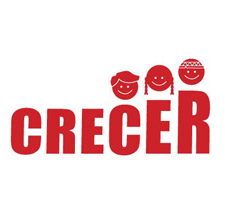 What is “Crecer”? What is “Crecer”?
CRECER is a joint strategy for the fight against poverty and chronic malnutrition in children and includes a component of economic development for the family.
 What are the objectives of CRECER? What are the objectives of CRECER?
Assist, until the year 2011, one million children under the age of five and 150,000 pregnant mothers who live in areas of extreme poverty in improving their nutrition, education, health and sense of identity and in reducing maternal and infant mortality, malnutrition, illiteracy, and the lack of basic services.
 When did CRECER start? When did CRECER start?
Since July 03 2007.
 Where? Where?
Peru’s President Alan García and Prime Minister Jorge del Castillo launched CRECER in 20 poor districts of Huánuco while Virginia Borra, Minister of Woman, began this program in Apurimac. CRECER was also implemented in Puno, Amazonas, Ayacucho Cusco and Huancavelica.
 How CRECER is financed? How CRECER is financed?
CRECER is financed by means of the budgets of the sectors and social programs involved. Also, as a result of austerity measures, merger of social programs and to realize savings in the state purchasing process, the increases in coverage will be covered by the "Fondo para la Igualdad" (the "Equality Fund”).
In addition, the private sector, through its Mining Solidarity Fund for People, will provide resources for sanitation infrastructure projects.
 Which are the main dates? Which are the main dates?
July 22, 2007: CRECER strategy reaches 330 districts.
October: CRECER coverage continues to expand in rural zones in 611 districts of first quintile.
December: CRECER moves forward to urban marginal areas.
May 2008: All the 811 poorest districts of Peru would be part of CRECER.
 Why were seven regions chosen? Why were seven regions chosen?
Because they have the most alarming ranking regarding chronic malnutrition, women’s illiteracy, lack of water and sewery, and people that cook with firewood or other material.
 How will children’s malnutrition be tackled? How will children’s malnutrition be tackled?
Provide integrated assistance for pregnant and nursing mother including counseling, family planning, birth control and birth and puerperium assistance.
Promote journalistic and systematic activities for children under the age of five aimed at assessing their growth and development.
Contribute to achieving literacy coverage for women over 15 years old, conditioned monetary tranfers programs, basic drainage and latrines, sense of identity, promotion of good nutrition habits and improved kitchens.
 What are the institutions that coordinate their activites within CRECER? What are the institutions that coordinate their activites within CRECER?
Ministries
PCM – Presidency of the Council of Ministers
MIMDES – Ministry of Women and Social Development
MINEDU – Ministry of Education
MINSA – Ministry of Health
VIVIENDA Y CONSTRUCCION – Ministry of Housing and Construction
Social Programs
PRONAA – National Program of Food Assistance
PRONAMA – National Program of Mobilization for Literacy
PRONASAR – National Rural Water and Sanitation Program
SIS – Comprehensive Health Insurance
JUNTOS - National Program of Support to the Poorest
Autonomous Organism
RENIEC – National Registry of Identification and Civil Status
Subnational Governments
REGIONAL GOVERNMENTS
LOCAL GOVERNMENTS
Organized Communities
GRASSROOTS SOCIAL ORGANIZATIONS
COOPERATIVE ROUNDTABLE ON THE FIGHT AGAINST POVERTY
Churches, Non-governmental organizations and international support organizations
 Why was the word CRECER chosen? Why was the word CRECER chosen?
CRECER implies nutrition, nourishment and protection of children since birth. In that sense, Peruvian State agrees to watch over all peruvian children to help them develop their skills without obstacles.
CRECER will be also implemented in the economic field. In its second stage, it will tackle the development of productive activities aimed at improving beneficiaries’ income and helping them overcome poverty.
CRECER will benefit all peruvians by promoting macroeconomic growth as well as decreasing poverty rate considerably in the country.
CRECER is the fight against poverty, CRECER means opportunities for the poorest, CRECER is the responsible and efficient use of State resources, CRECER is citizen engagement.
 How does the private sector take part in CRECER? How does the private sector take part in CRECER?
Private sector’s role is important in the fight against extreme poverty and malnutrition. Mining businessmen have offered their support to co-finance with the State the sanitation infrastructure projects through the Mining Solidarity Fund for People.
 How is malnutrition rate in Peru? How is malnutrition rate in Peru?
Chronic malnutrition in peruvian children reaches 24.2% nationwide. However, the WHO has defined a new reference pattern in which chronic malnutrition rises to 31%.
During CRECER’s first stage in 330 districs, Chronic malnutrition in children reaches 66%. 220000 children under five are estimated to suffer from malnutrition; from this number, 150000 suffer from acute malnutrition. In the same way, there are about 470000 women of childbearing age (15-49 years old), from which 60000 are pregnant and 200000 are illiterate.
 How many districts does CRECER comprise in its first stage? How many districts does CRECER comprise in its first stage?
The State will involve 330 poor districts located in the departments of Huánuco, Ayacucho, Apurimac, Huancavelica, Puno, Cusco and Amazonas.
Private sector will comprise 211 poor districts located in the departments of Lambayeque, Cajamarca, La Libertad, Ancash, Pasco, Lima, Junín, Ica, Arequipa, Moquegua and Tacna.
|



